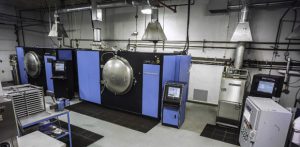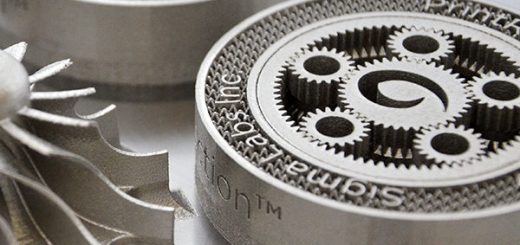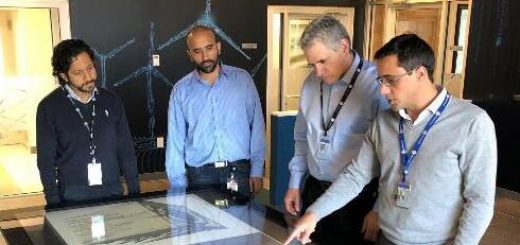Leading MIM Furnace Manufacturer Reports Strong Demand from the Metal AM Sector
Leading Metal Injection Moulding (MIM) furnace manufacturer Elnik Systems LLC, Cedar Grove, New Jersey, USA, is reporting strong sales growth to the metal Additive Manufacturing industry. The company specialises in laboratory and production scale vacuum debinding and sintering furnaces that have been specifically developed for the processing of MIM parts. As such, its systems are well suited to the thermal processing of parts produced using the new generation of MIM-like processes.

Vacuum debinding and sintering furnaces for MIM and MIM-like processes at Elnik Systems/DSH in Cedar Grove, New Jersey, USA
The company has now supplied nine systems to the metal AM industry, with usable volumes ranging from 27 to 117 litres.
Stefan Joens, Vice President of Elnik Systems, commented, “There are multiple reasons for our success in the metal binder jetting and filament-based AM sector. The most important is the ability for potential customers to experiment with the furnaces at our on-site development partner, DSH Technologies, LLC.”
“This service has helped part makers to understand the quality of our furnace systems, the consistent results that can be achieved, and their flexibility of use before committing to a purchase. Our reputation in the debinding and sintering industry is also a strong attraction – we have demonstrated our value to the MIM industry over several decades, and now the metal AM industry is doing its homework before investing.”
Contract debinding and sintering services expanded
Elnik Systems and DSH have for many years offered toll debinding and sintering services from the New Jersey facility, enabling companies of processing small-to-medium volumes of MIM and MIM-like AM parts before investing in their own furnaces, or as part of a component development programme.
This service is now also being offered to the European market from a new facility in Waldachtal, Germany. Elnik Systems GmbH has the capability of processing first stage debinding via the catalytic process, and second stage debinding and sintering services in an Elnik MIM3045 furnace. This large furnace has a 117 litre usable volume, is high vacuum capable, features argon purification, allows survey thermocouples to be used as needed and the furnace can process any binder-containing metal powder part, be it from a binder jetting, filament-based or pellet-based metal AM process.
3D Science Valley Reivew
The growth of the Elnik Systems sintering furnace and sintering services business in the metal additive manufacturing industry reflects the growing demand for metal 3D printed parts in the manufacturing industry, especially the demand for metal binder jetting 3D printed parts .
International players such as Desktop Metal, Markforged, 3DEO, Exone, Digital Metal as well as GE have even focused their efforts on the binder jetting technology, which shows that this technology has become a dark horse in metal 3D printing.
The printing process based on the binder jetting technique is approximately cold forming, and the parts are formed by spraying layers of adhesive, and the parts are then manufactured through high-temperature sintering.
This technology can print in batches, at low cost, at high speeds, requires less support for the part, and shrinks the material.
The application of binder jetting technology in the field of metal printing, we believe that this greatly exceeds the limelight of XJET nanoparticle spray technology. Prior to the metal binder jetting technology, XJET was considered to be the future star, but the speed of technological innovation makes people lament. At the same time, binder jetting is used for metal printing.
Compared with powder bed laser meling technology(SLM), it also has many advantages. The former is often not allowed to add support. It can print more complex structures that SLM can’t print, and materials that SLM can’t form. However, it is difficult for one technique to completely replace the other technique. The metal binder jetting subsequently needs to be sintered, and it involves the problem of material shrinkage. There are drawbacks in manufacturing high-precision small-sized parts at one time, and it is not comparable to manufacturing large-sized parts. Lens, even in terms of surface finish, is inferior to XJET. In short, each technology has its own strengths and it is very difficult to emerge out of the blue.
Source: Powder Injection Molding



Recent Comments